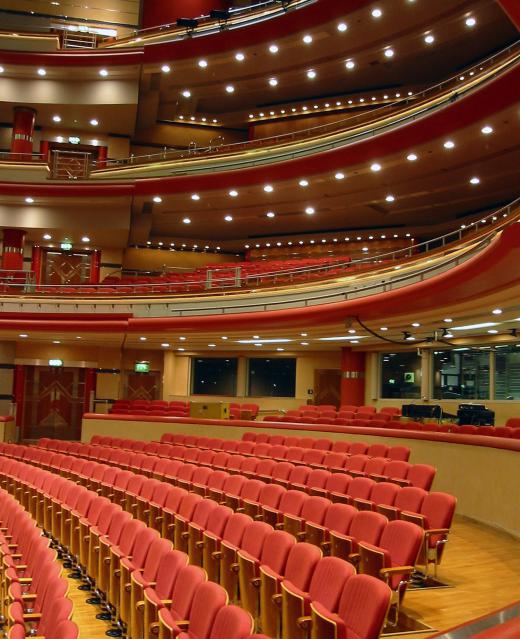What Is an Architectural Acoustic?
A building's noise level has a tremendous impact on people. Whether it is a crowded space like a school or airport, or a quiet environment like an office, noise can impact productivity, comfort, and stress levels. Using architectural acoustic elements such as panels and diffusers allows better design of sound energy for optimal experience. Made from sound-sensitive materials with acoustical, absorptive, or reflective properties, and hung around rooms and ceilings, these additions make indoor architectural spaces more compatible with human needs.
It's important to manage and limit the transmission of sound and unwanted noise not only for occupants, but for surrounding properties. Architectural acoustic products are used to achieve this result. These products may include ceiling and wall panels, drop ceiling panels, and room partitions. Such products can allow sites to observe building codes and also add design flourishes and enhance lighting schemes. Adding unique visual elements to rooms, such as abstract geometrical designs, these elements can add a little or a lot of noise reduction and make louder rooms more soundproof for passers-by.

Architectural acoustic panels attach to walls and come in standard and custom designs. These can range from utilitarian squares to shapes cut into interconnecting forms, which add a decorative dimension in auditoriums and theaters. Variations of these products can include acoustical wall panels and ceiling tiles. They may also provide assorted lightweight architectural effects to dress up an otherwise bare space. These can include baffles and ceiling absorbers, which may hang from ceilings to provide echo reduction in large interior spaces like gentrified warehouses.

Diffusers are two and three-dimensional wall panels shaped in geometric forms. These serve to soften sound waves and spread them more warmly around rooms. The effect can create a much more convivial atmosphere that might otherwise be made harsh with echo. These room elements radiate sound energy in many directions without undue sound absorption or uncomfortable reflections. Such elements enhance classrooms and auditoriums for a better-quality acoustic space.
Other architectural acoustic products include fabric-wrapped panels and acoustical curtains. These more decorative decors suit noisy environments such as airports, hospitals, and offices. Numerous additional products round out the acoustics of a room. Sound-absorbing foam, vibration mounts for fixtures, and insulation can all enhance noise reduction; window and door seals and floor underlays can also contribute to a room's acoustical properties. Combining acoustical efficiency with visual effect, architectural acoustic products can transform bare spaces into gentler, more welcoming interiors.
AS FEATURED ON:
AS FEATURED ON:












Discuss this Article
Post your comments